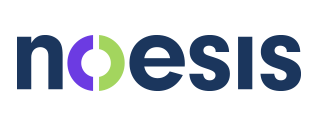Innovation is defined, simply, as the introduction of something new. Sounds easy enough, right?
So why is it so hard to achieve? Everyone seems to want to want it, yet true innovation remains elusive. In fact, according to a McKinsey survey, a whopping 94 per cent of executives aren’t happy with their company’s innovation performance.
Take a look at Fast Company’s list of this year’s World’s 50 Most Innovative Companies and you’ll see a different story – different ways to lead, engage and stimulate.
But these forward-thinking companies are the exception, not the rule. So how do they succeed at creating amazing, interesting, out-of-the-box products, systems and services?
We don’t have to guess.
The most innovative brands generally don’t adhere to a historical, my-way-or-the-highway mentality that instills compliance, if not fear, in its employees. Not only is that an outmoded model, it just doesn’t work if you want innovation. In fact, it’s been proven that the more anxious and pressured people feel, the fewer insights they have.
Add to that that the brain is built to resist change and is programmed to mistrust strangers and those who appear different from us, and you’ve got yourself an innovation drought.
How to be Innovative
If the key components necessary for innovation – a sense of security in the workplace and exposure to new experiences, ideas and people – aren’t present in your organization, you’re sure to be among those leaders unhappy with the dearth of new ideas and concepts.
Enter NeuroSafety. To foster an innovative culture, it starts with creating a brain-safe, or NeuroSafe, environment. Because the safer and more secure we feel, the braver we are to venture into new territory.
If you want innovative thinking, employees’ brains need to feel safe, positive, curious and comfortable in their knowledge their thoughts and ideas will be heard. They need exposure to diversity, alternative ways of thinking, and to connect with and learn from different teams. Doing so will not only feed innovation, it will literally change our brains neural pathways, allowing for new insights and approaches.
None of this can happen unless employees feel safe enough to speak up, share their ideas and be open to different ways of thinking. You can get there. And when you do, perhaps you too can join the list of the world’s most innovative companies.
Noesis delivers neuroleadership consulting and training to organizations handling everyday change and major transformation initiatives. We help our clients permanently and scientifically improve leadership.


Recent Comments